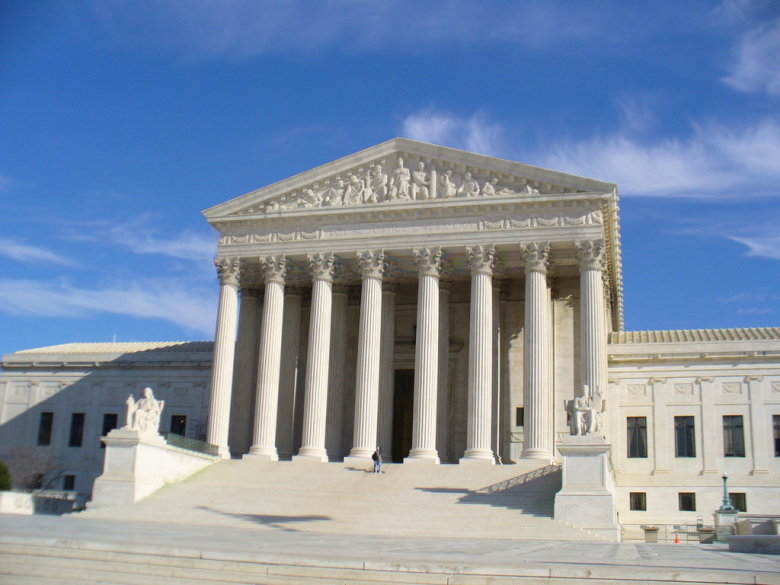A Bit Of Good News For Patent Holders – Finally.
The Supreme Court issued a unanimous decision in the Halo v. Pulse case today rejecting the rigid rules that the Federal Circuit have been using in deciding enhanced damages in patent cases. This will have very important implications on the willingness or un-willingness of companies accused of patent infringement to seek negotiated settlements. As we try to lessen the impact of patent trolls in the economy through changes in the patent law and USPTO procedures we have weakened some aspects of the US patent law and made it easier to invalidate issued patents –patents that perhaps should not have been issued in the first place. Without arguing about the pros and cons of the patent reform, what we see empirically is that the accused infringers do not take licenses to patent unless there is litigation or at the least a very credible prospect of litigation. There is simply no incentive to take a license otherwise.
Changes such as those that resulted from the America Invests Act and subsequent Supreme Court decisions are definitely discouraging patent trolls and reducing the number of baseless patent infringement claims looking to get nuisance settlements. However, it has created a phenomenon termed ‘efficient infringement’ where an infringer is inclined to continue making and selling the infringing products knowing well that a patent holder will either not be able to put together the millions of dollars needed to bring an infringement suit, and that there will be multiple ways to attack the patents themselves, and most importantly, if a suit is brought and the patent holder wins, the infringer will have to pay no more than what it would have paid up front. Some do argue that it simply makes economic sense to continue infringing unless you are eventually compelled to pay damages.
This may change soon, thanks to the Supreme Court’s decision in the Halo v. Pulse case. It may be easier to prove willful infringement and hence collect treble damages for patent holders depending on what the infringer knew at the time of the infringement.
As it stood up until this latest decision from the Supreme Court is that the district courts could award treble damages in willfulness cases based on a two-pronged test established in the Seagate case. Accordingly, first, the patentee had to show by clear and convincing evidence “that the infringer acted despite an objectively high likelihood that its actions constituted infringement of a valid patent”. Secondly, the patentee had to then prove “subjective recklessness”. Moreover, the determination of objective likelihood of infringement was decided de novo in an appeal, meaning no deference was given to the district court’s finding of willfulness when the federal Circuit looked at the case.
It is easy to recognize that for a patent holder to show by “clear and convincing” evidence that the infringer knew or should have known that it was likely infringing is difficult, and also to show that there was “subjective recklessness” adds to the difficulty. Therefore it is no surprise that there have not been many cases where willful infringement was decided in recent years. Even if such a determination was made by a district court, the Federal Circuit decided on the issue with no deference to the district court’s decision, therefore creating another opportunity for willfulness to be overturned.
The new decision by the Supreme Court brings a few important changes. Firstly, the Supreme Court said that the high bar of “clear and convincing” evidence is not required for the finding of willfulness. The district courts have discretion on what cases constitute willful infringement and can award enhanced damages if they find there was egregious infringement behavior. The second important change is that the enhanced damages will be reviewed on appeal with deference to the district court findings. Another equally important change is that the willfulness is based on what the infringer knew at the time of the infringement, and will not be undone by what the infringer discovered later on during litigation, for example. This rejects the willfulness defenses where an infringer may have shown egregious infringement behavior early on, in effect knowing that it is infringing, and then later sought out and perhaps found evidence related to validity of the patent, for instance. In effect, a company cannot objectively know that it is infringing a patent and continue infringing, with the hope that it can find a defense later on if it is sued.
All of these changes collectively make it less burdensome for a patent holder to prove willful infringement, and therefore be awarded treble damages. In other words, the cost of ‘efficient infringement’ has just gone up. So much so that in many cases it may no longer make economic sense to continue infringing unless there is objective reason to believe that there is either no infringement or that the patent is invalid. All else being equal, this should make it more likely for accused infringers to seek negotiated settlements rather than force litigation. Actual impact of the recent decision on the economics of efficient infringement probably requires a detailed options analysis but we can probably expect more cases where enhanced damages are awarded in the near future until parties adjust their behaviors and a new steady state is reached.
In a more broad sense, one of the handicaps for patent holders is being remedied to an extent with the Supreme Court’s Halo decision, which may give slight support to patent valuations and possibly lead to more activity in patent transactions as well. The next case to watch from the Supreme Court docket is the Cuozzo Speed Technologies that may or may not bring changes to the standard used in Inter Parte Review of patents by the PTAB.


Comments are closed.